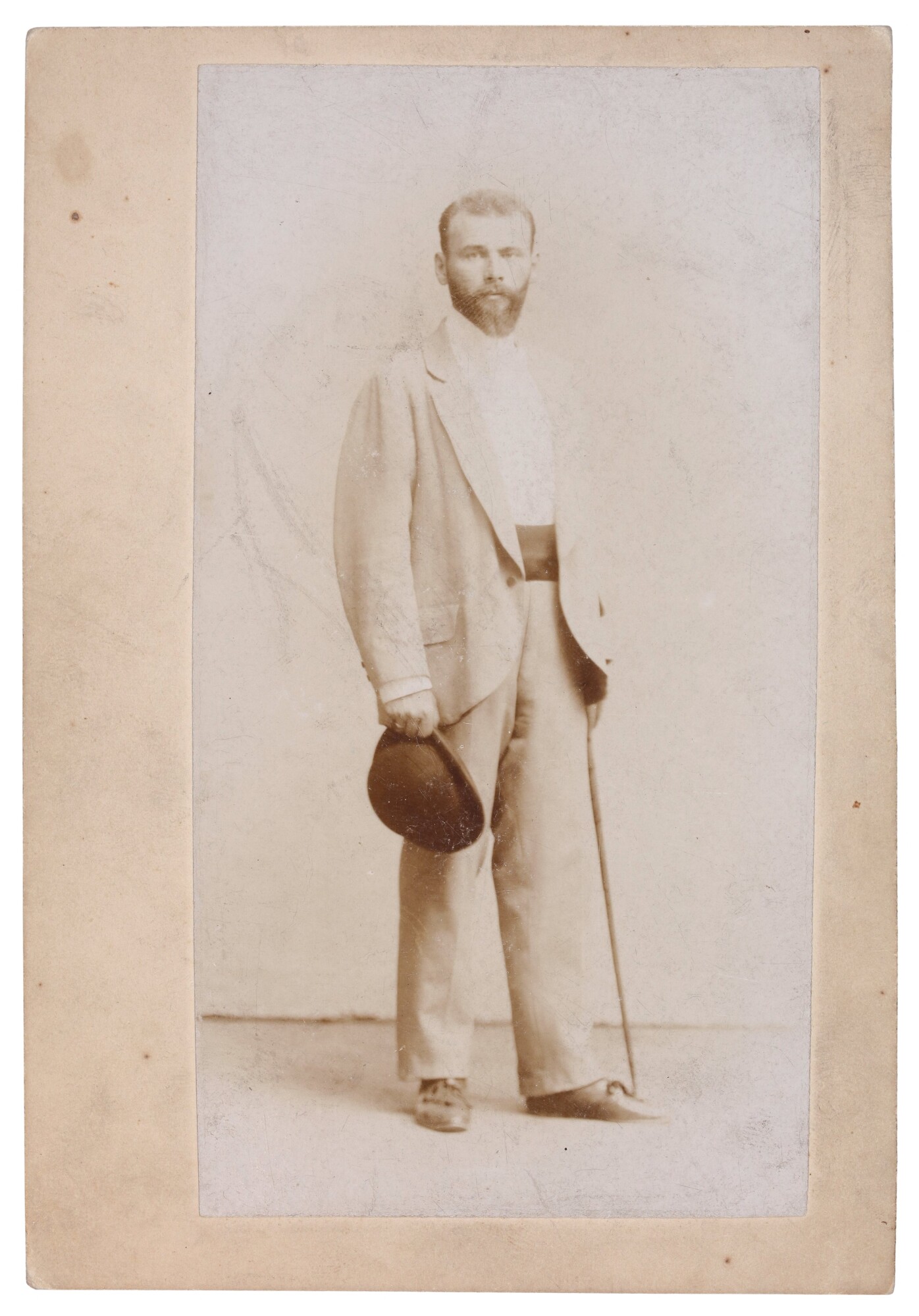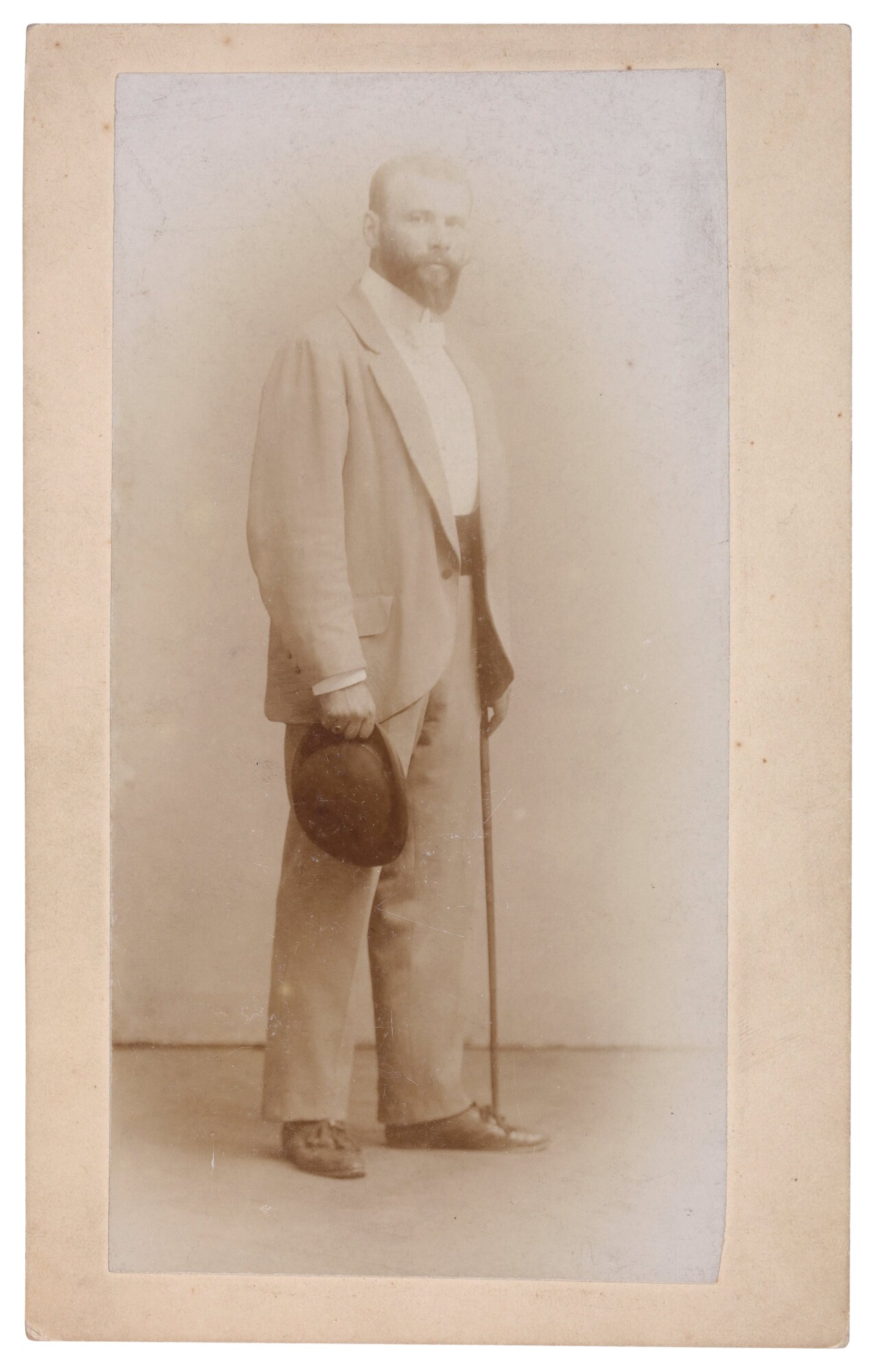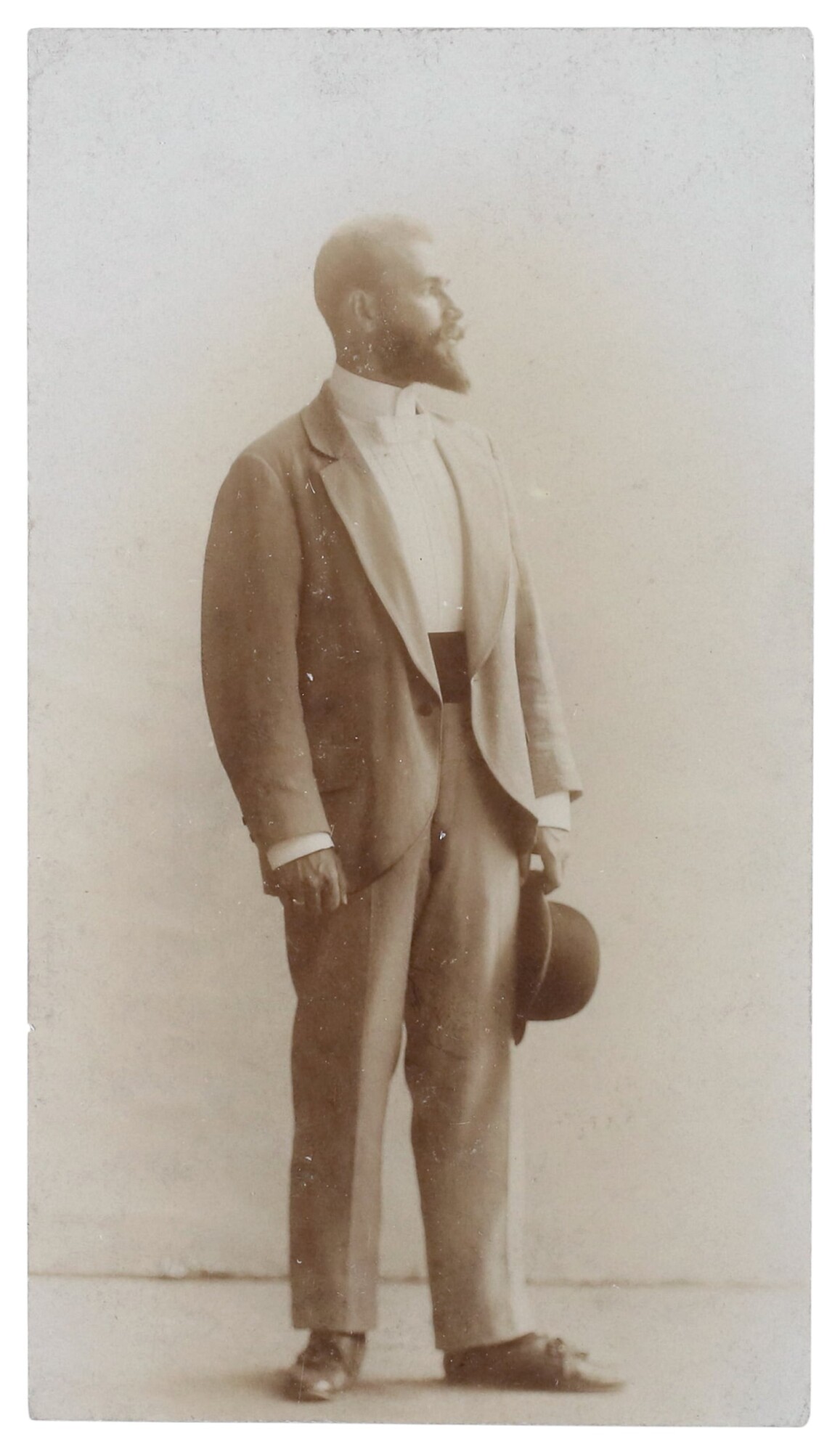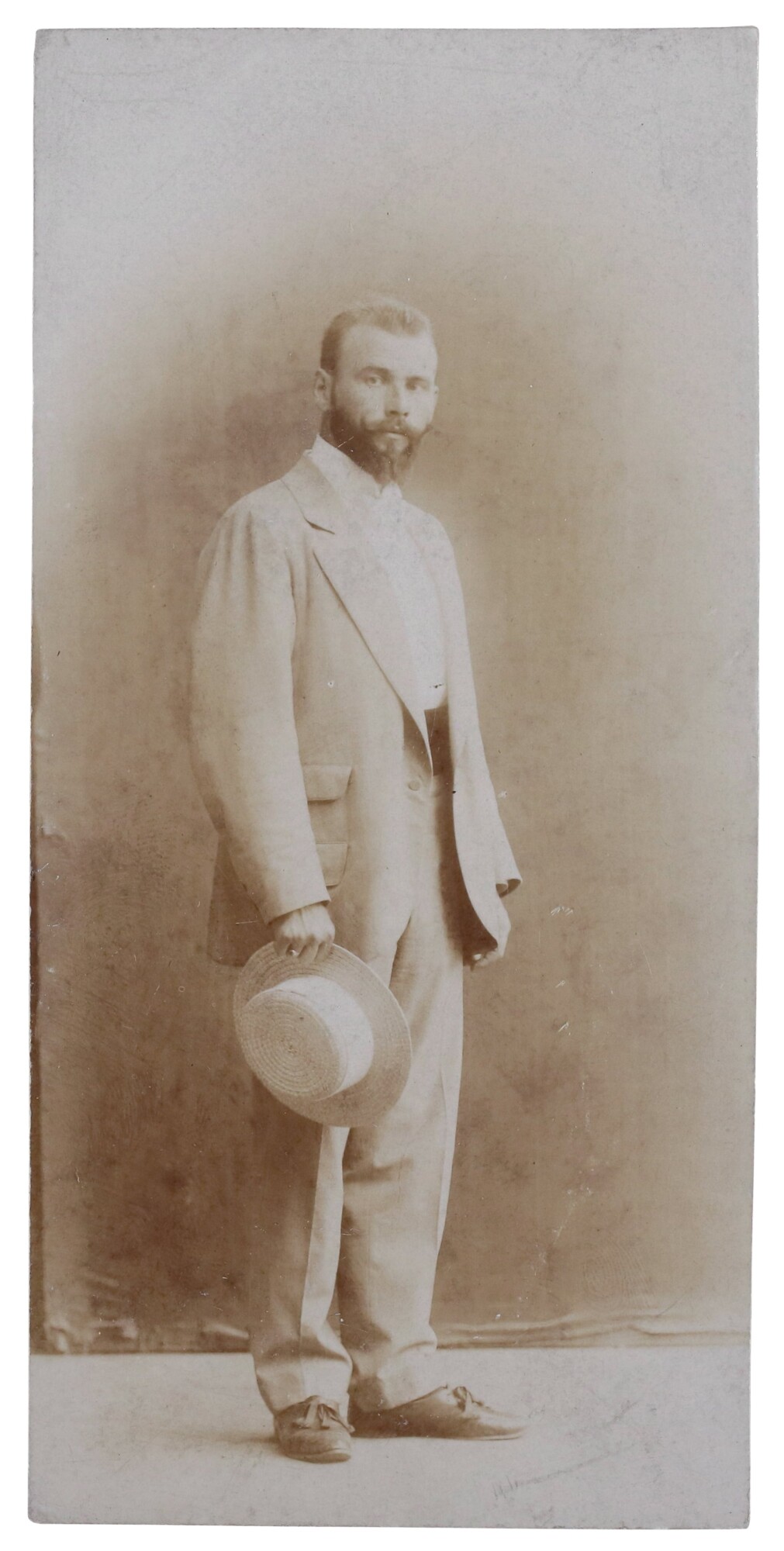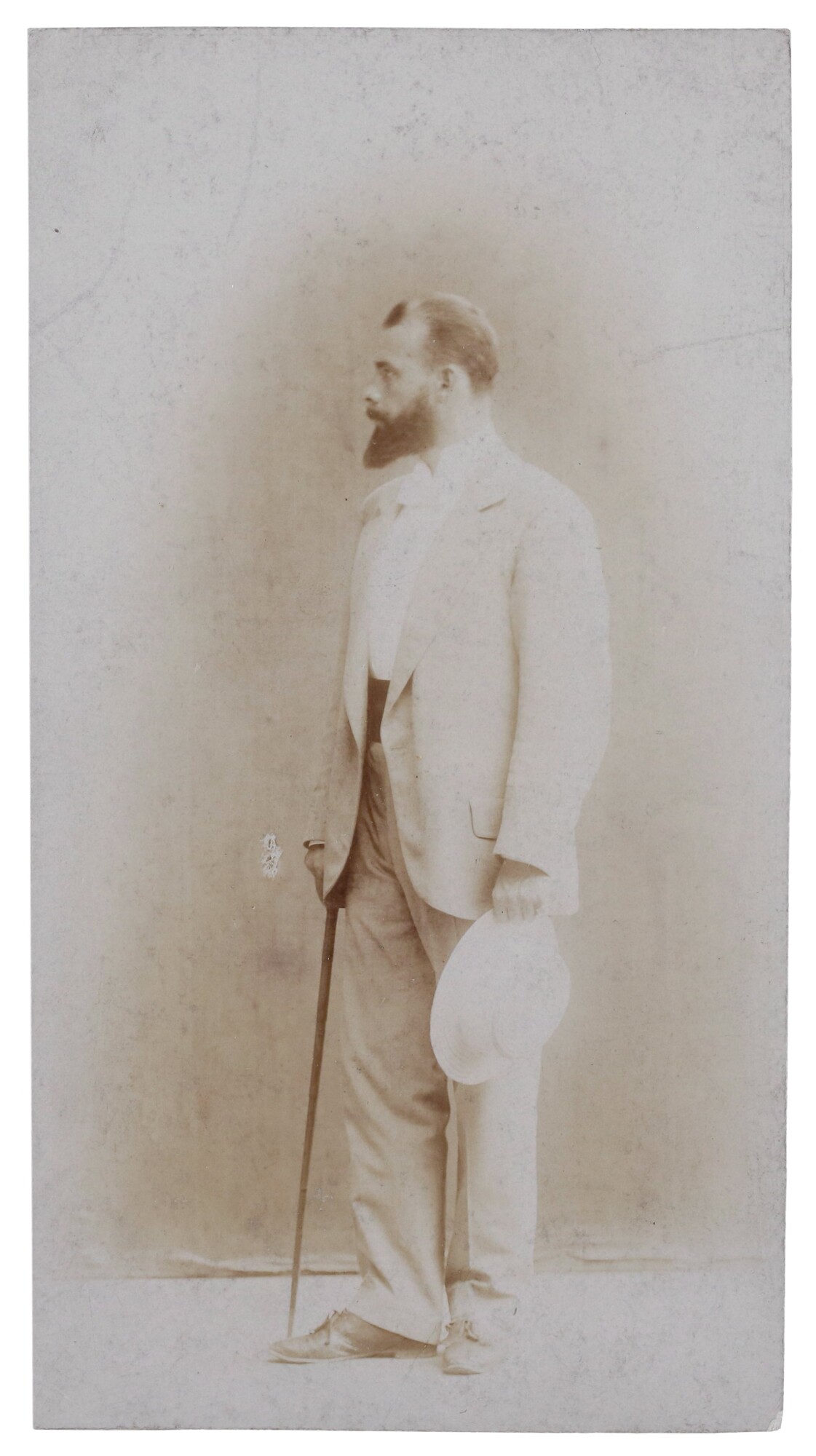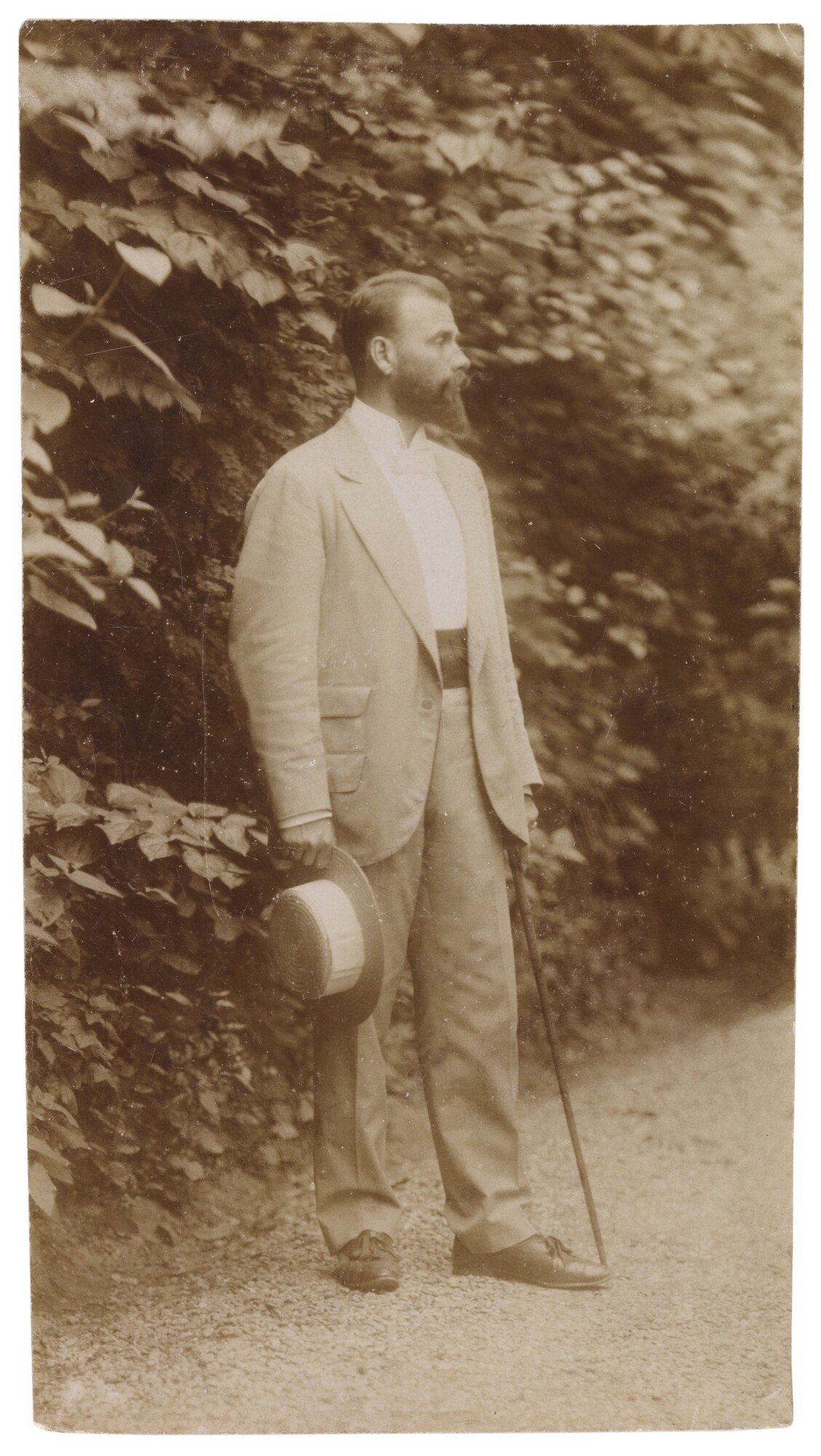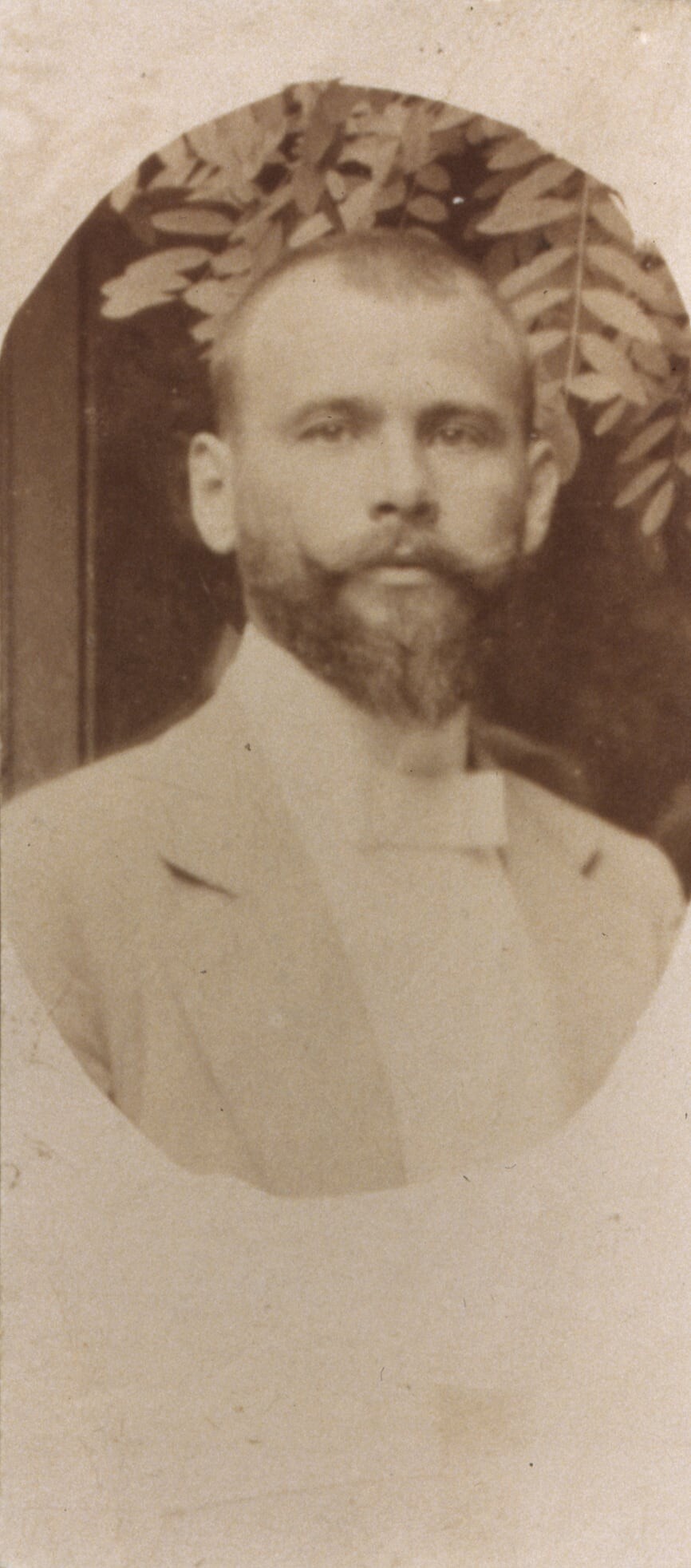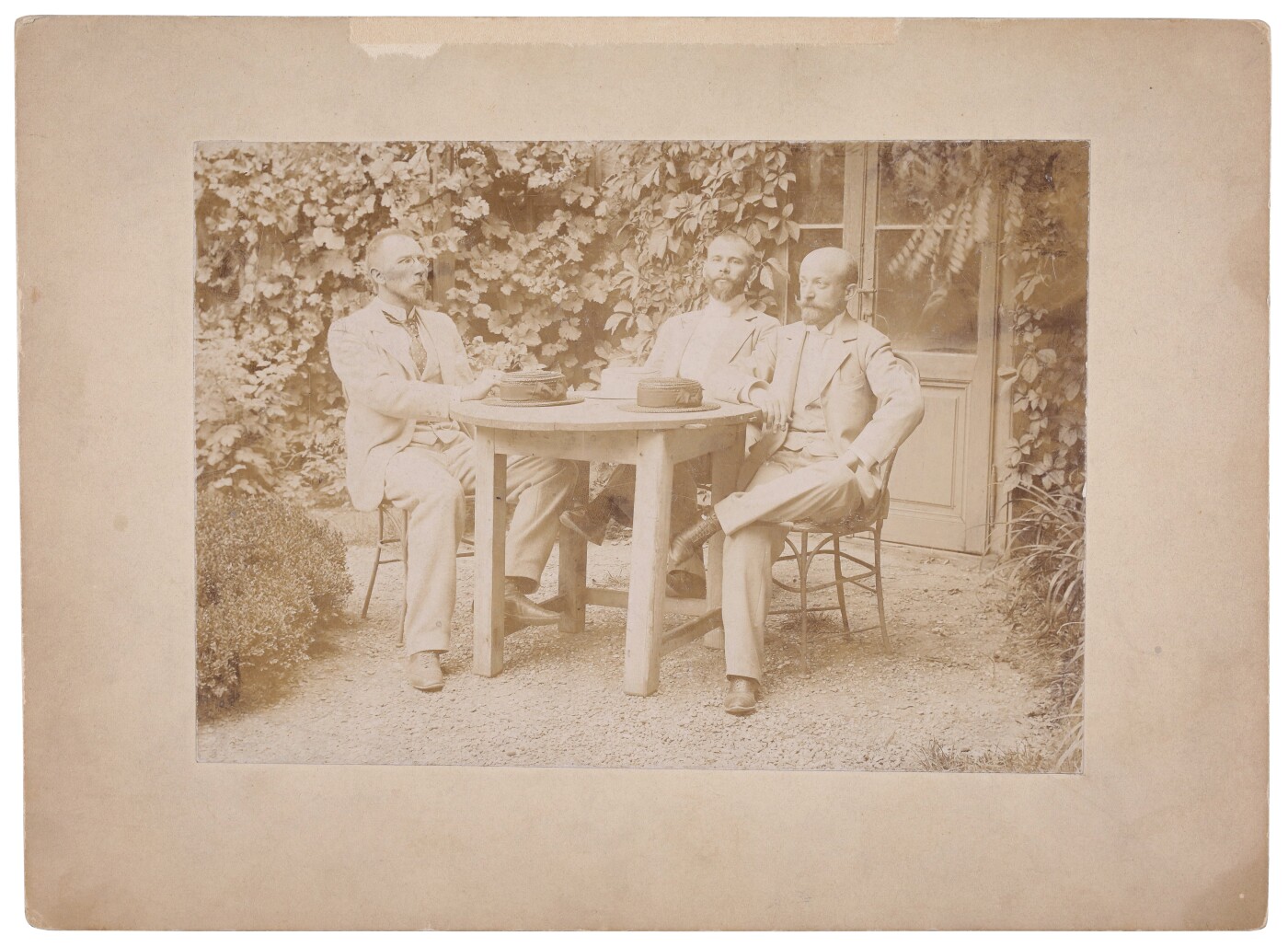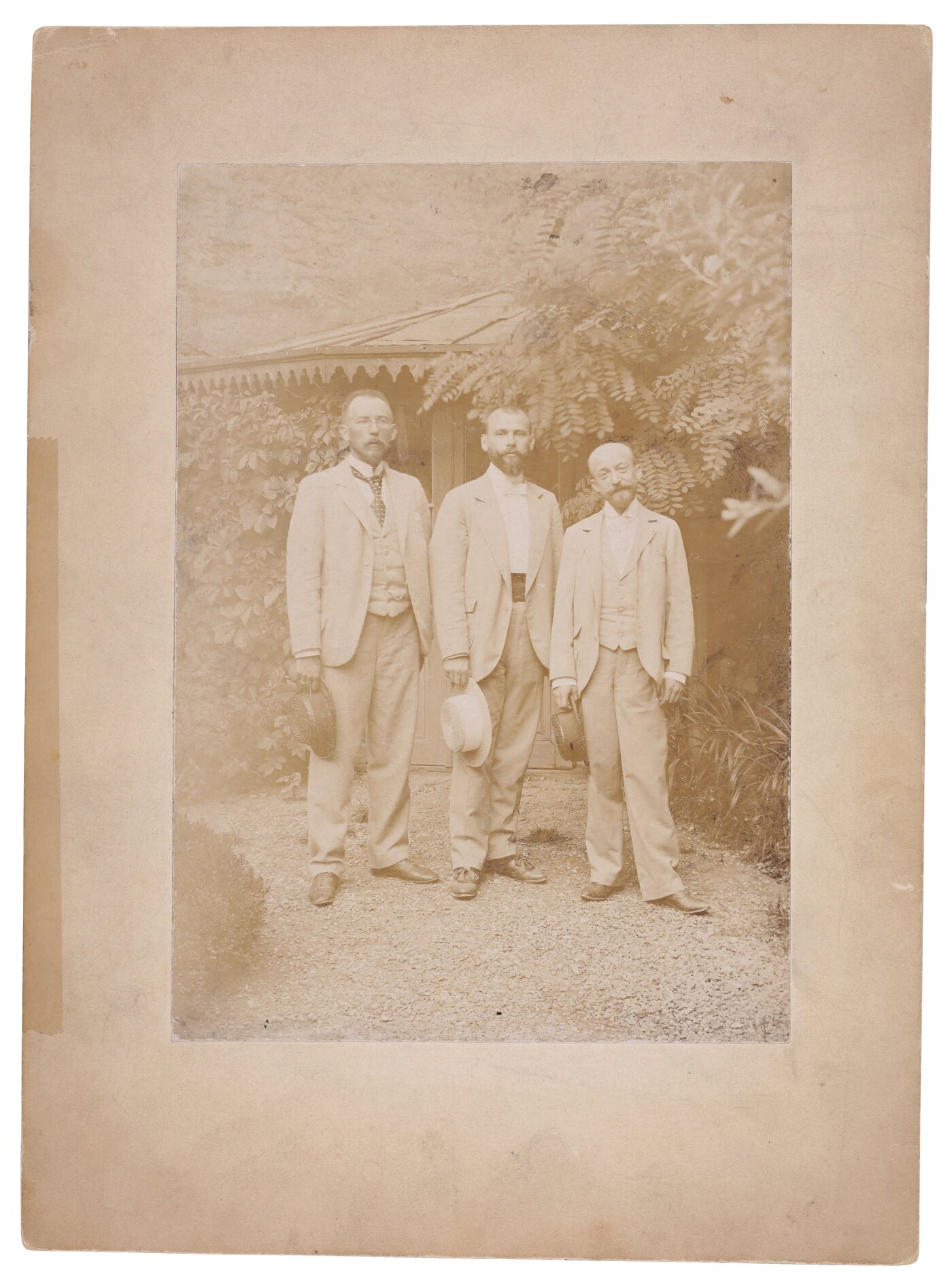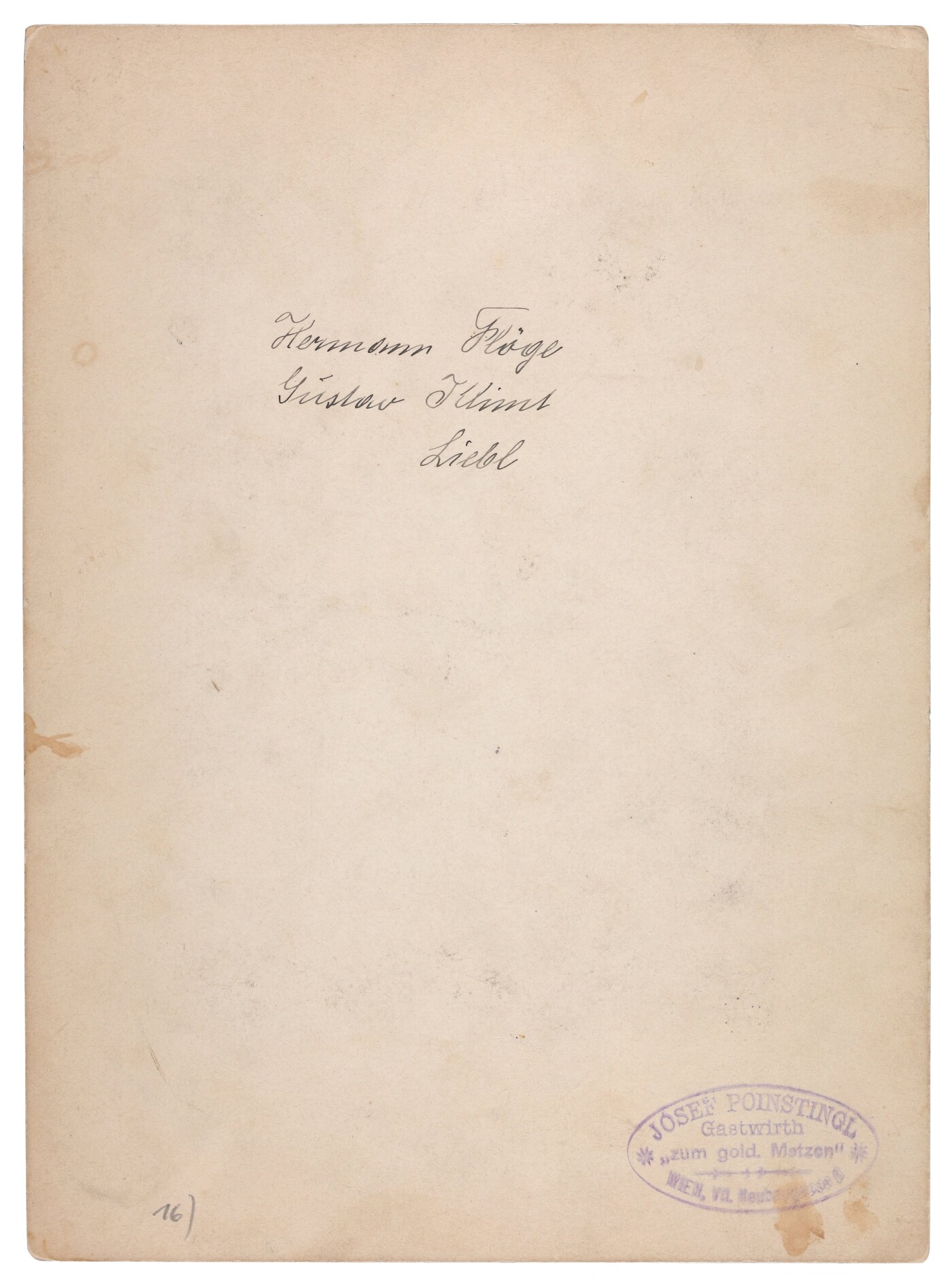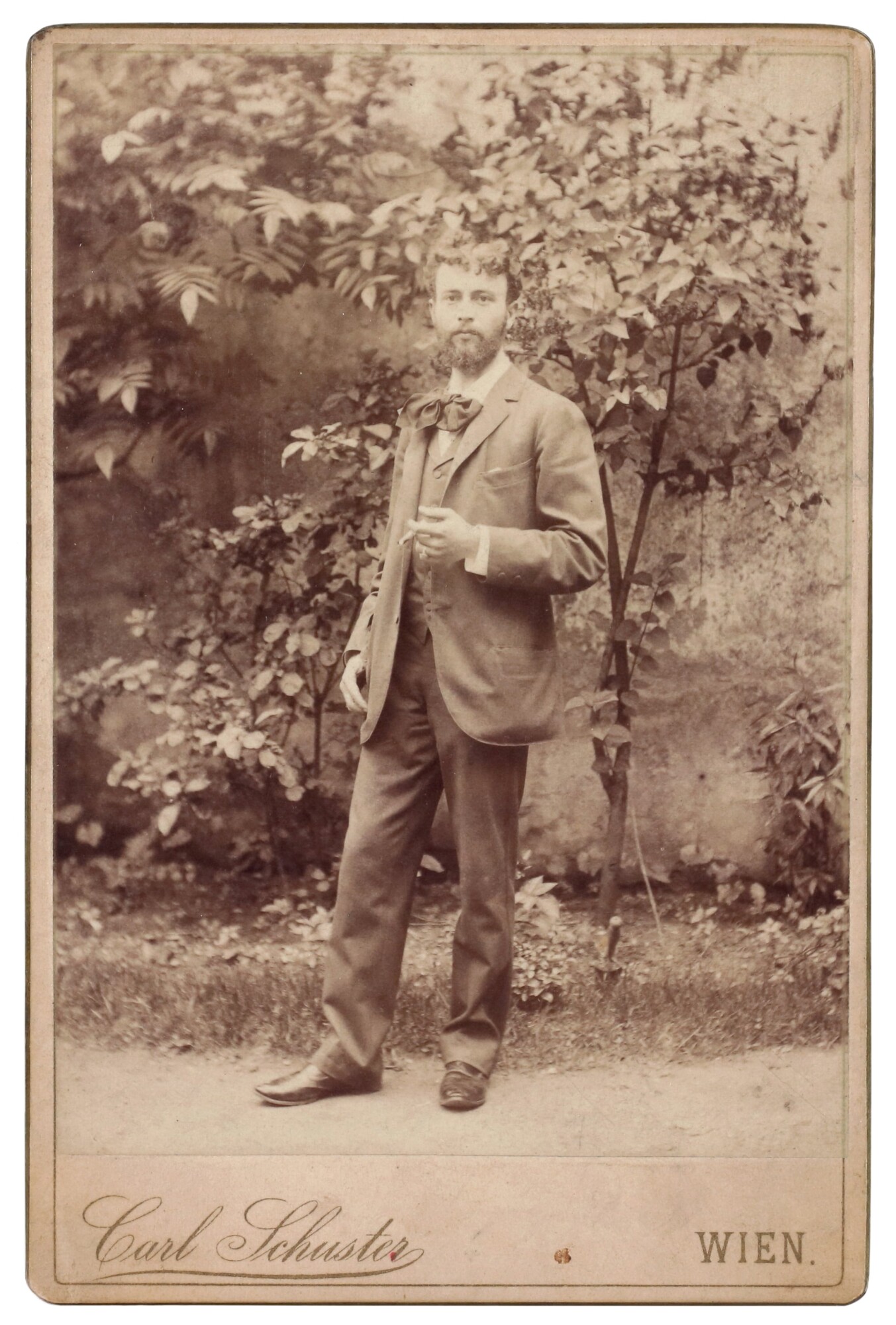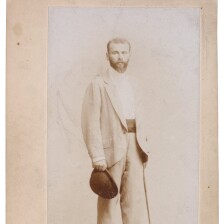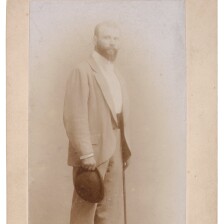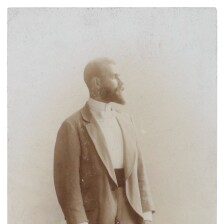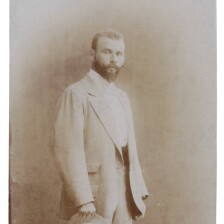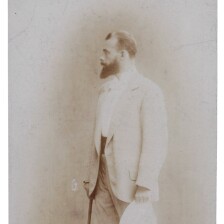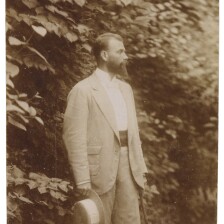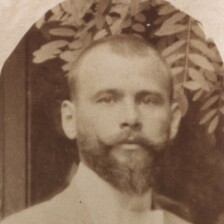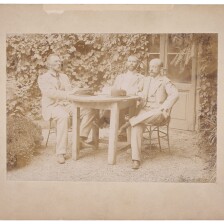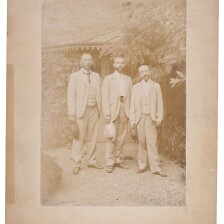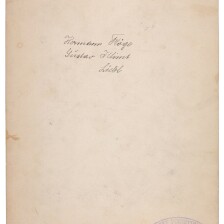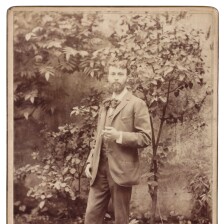Carl Schuster
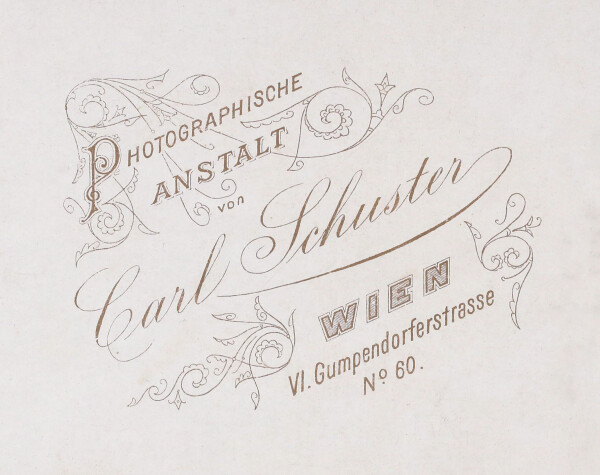
Photographische Anstalt von Carl Schuster, back of base cardboard
© Klimt Foundation, Vienna
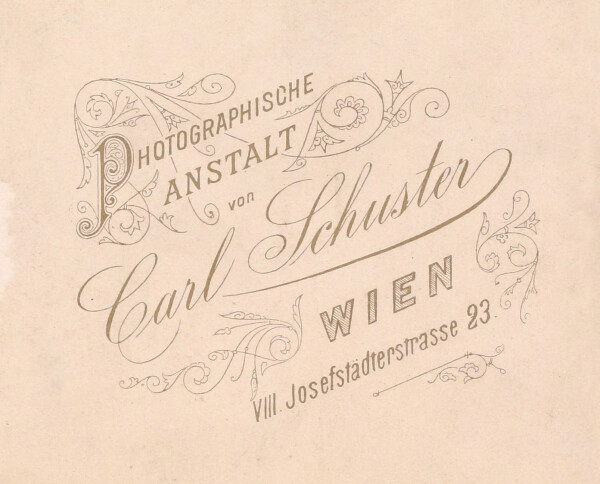
Photographische Anstalt von Carl Schuster, back of base cardboard
© Klimt Foundation, Vienna
Carl Schuster was a painter and photographer and one of the first chosen by Gustav Klimt to have his portrait taken around 1892. At the time, the photographer’s studio was located at No. 23 Josefstädter Straße, in the immediate vicinity of the studio of the Klimt brothers and Franz Matsch.
Carl (also known as Karl) Schuster was born on 1 December 1843 in Iglau, Moravia (now Jihlava, Czech Republic) and by 1882 had settled in Vienna as a photographer. In the 1880s he ran Carl Schuster’s “Photographische Anstalt” initially at No. 60 Gumpendorferstraße and then at No. 11 Mayerhofgasse. At the “Internationale Elektrische Ausstellung” [“International Electrical Exhibition”] of 1883 he produced so-called “image microscopies” at the exhibition theater evening after evening by projecting small objects onto an opposite surface in “tremendous magnification.”
From 1892 he was listed in the trade and business directory as a photographer for “portrait reproduction, pictures of groups, landscapes, architecture, and interiors; oil portraits; instruction in photography; copying” at No. 23 Josefstädter Straße. Franz Matsch lived at the same address, and from 1891 the latter shared a studio with the brothers Gustav and Ernst Klimt in the backyard of the house next door at No. 21. It was probably due to their neighborly relationship that around 1892 a series of photographs showing Gustav Klimt in various poses with a walking stick and hat, as well as pictures of Ernst Klimt, Hermann Flöge, and a certain Herr Liebl were taken. A stamp on the reverse side of the group portrait indicates that Carl Schuster probably photographed the series in the garden of Josef Poinstingl’s inn “Zum goldenen Metzen” at No. 6 Neubaugasse. The Klimt brothers and Hermann Flöge also visited the inn at the time in the company of textile manufacturer Julius Rhomberg, in whose Viennese branch of the Herrburger & Rhomberg company Hermann Flöge worked first as an accountant and then as an authorized representative.
Carl Schuster died on 30 December 1892 at the age of 49. Shortly afterwards, Gustav Klimt stayed in Totis, from where he wrote in a letter to his mother in January 1893:
“Should money be sent to me in Vienna, I would ask you to give Matsch the 54 guilders he paid for me to the late photographer Schuster.”
Schuster’s son, Anton Carl (also known as A. Carl or Karl) Schuster, was also a photographer and is known to have run a studio at No. 6 Meidlinger Hauptstraße near Theresienbadpark in the 12th District from 1893 onward.
Literature and sources
- Alice Strobl (Hg.): Gustav Klimt. Die Zeichnungen, Band IV, 1878–1918, Salzburg 1989, S. 62, Nr. 3292.
- Agnes Husslein-Arco, Alfred Weidinger (Hg.): Klimt & Emilie Flöge. Fotografien, Vienna 2012, S. 21-25, S. 234.
- Christine Ehardt, Audioprojektionen: Radio im Spannungsfeld soziotechnischer Mediensysteme. Schuster Karl. doi.org/10.25969/mediarep/3886 (02/11/2022).
- N. N.: Kleine Chronik, in: Die Presse, 31.12.1892, S. 15.
- Adolph Lehmann's allgemeiner Wohnungs-Anzeiger. Nebst Handels- u. Gewerbe-Adressbuch für d. k. k. Reichshaupt- u. Residenzstadt Wien u. Umgebung, 24. Jg. (1882), S. 871.
- Adolph Lehmann's allgemeiner Wohnungs-Anzeiger. Nebst Handels- u. Gewerbe-Adressbuch für d. k. k. Reichshaupt- u. Residenzstadt Wien u. Umgebung, 25. Jg. (1883), S. 869.
- Adolph Lehmann's allgemeiner Wohnungs-Anzeiger. Nebst Handels- u. Gewerbe-Adressbuch für d. k. k. Reichshaupt- u. Residenzstadt Wien u. Umgebung, 34. Jg. (1892), S. 1639.
- Taufbuch 1866/67 (Tomus 65), röm.-kath. Pfarre St. Ulrich, Wien, fol. 93.
- N. N.: Von der Elektrischen Ausstellung, in: Neues Wiener Tagblatt, 07.10.1883, S. 3.
- N.N.: Von Peter Lechner, in: Neues Wiener Tagblatt, 02.03.1890, S. 4.
- Brief von Gustav Klimt in Tata Tóváros an Anna Klimt in Wien (06.01.1893). GKA43.
- Sterbebuch 1891/98 (Tomus 20), röm.-kath. Pfarre Maria Treu, Wien, fol. 84.


